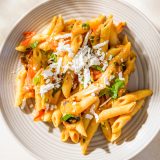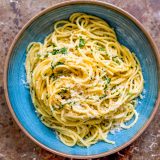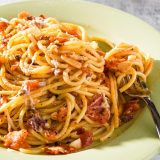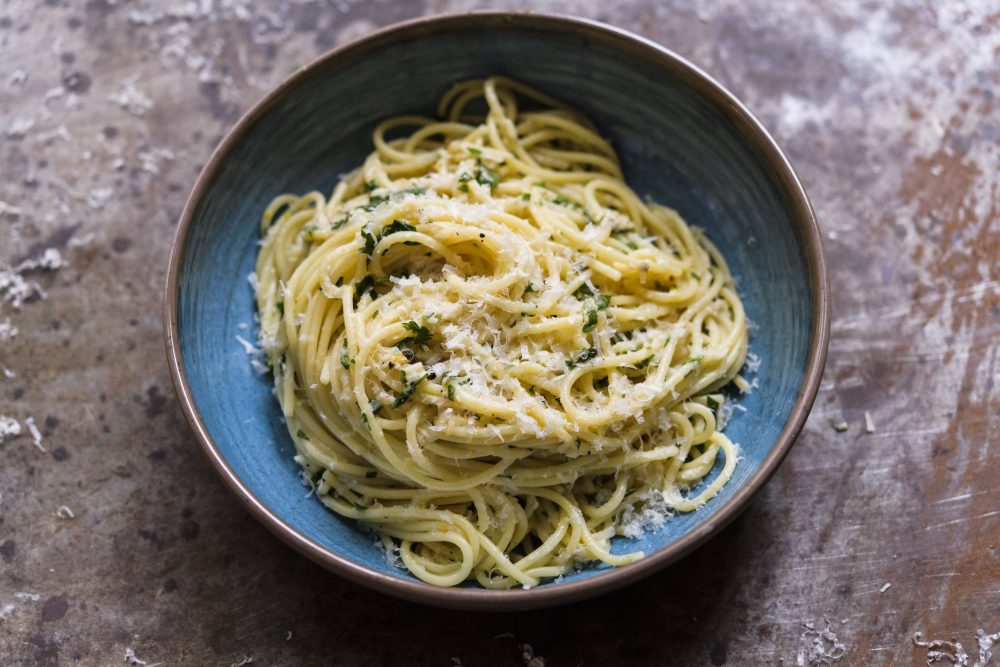Does the amount of pasta water you use really matter? When Milk Street’s editorial director, J.M. Hirsch, traveled to Rome in search of Pasta All’Amatriciana, Rome’s most simple tomato-based pasta, he confirmed that yes, yes it does.
The reason being that you want to save that pasta water to use in your sauce, and you want it to be nice and starchy. Less water will result in starchier cooking liquid, which helps the sauce cling to the pasta. The added bonus, of course, is that the water will boil faster, too.
Four quarts maximum should do the trick, but in the case of our Pasta All’Amatriciana, we use only two.
Of course, that’s not the only pasta-cooking pointer Hirsch picked up in Rome. For enhanced flavor, try undercooking your pasta by a couple minutes, before finishing it directly in your hot, simmering sauce. The “thirsty” pasta will greedily soak up the sauce for maximum flavor. It’s a tip we use in all kinds of pasta recipes, like Spaghetti Al Limone or Pasta Alla Norma. Having that starchy pasta water at the ready to thin out the sauce as needed, lest it get too thick from that parched pasta, will make all the difference. That starchy pasta water is like liquid gold.
This same tip can also be used with couscous, which is nothing more than a very small form of pasta.
Add a hunk of pecorino into pasta water that’s so salty it tastes like the sea, and you’ll really be cooking the Italian way.
See here for some of our favorite pasta recipes:
Pasta All’Amatriciana
In Rome, red sauce is rich, hearty and barely there.
Pasta Alla Norma
A simple Sicilian pasta.
Spaghetti Al Limone
The addition of lemon lightens and brightens silky Italian pasta.
Pasta with Pistachios, Tomato and Mint
Here, fresh herbs and nuts brighten this pasta that’s ready in minutes.
Cacio e Pepe
We founds a simple solution for a simple but finicky pasta.
Gemelli Pasta with Chevre, Arugula and Walnuts
We call this the new creamy pasta.
Spaghetti with Lemon, Anchovies and Capers
A fast weeknight pasta from Lidia Bastianich.







